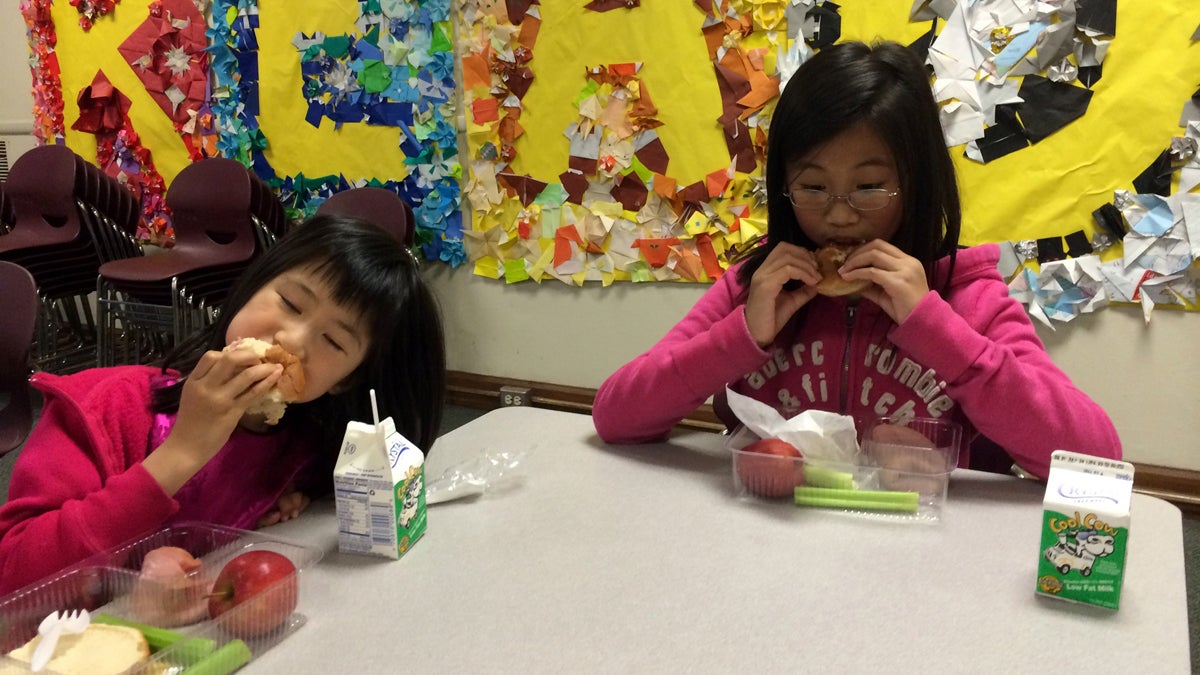What happens to free school lunches during summer break?
Listen
Kids in Oakland
With school just a few weeks off, some kids are soaking up the final, carefree days of summer. Yet for many children, summer can mean going hungry.
Thousands of schools, community centers and libraries serve free meals to kids over the summer months. But nationwide, these meals only reach about one in six children who qualify for free or reduced price lunch during the school year. It’s an issue across the country, including in Oakland, California, across the bay from wealthy San Francisco.
This summer, Oakland’s biggest public library is one of those free meal sites. It sits just off Lake Merritt, in the center of the city. On the library’s second floor, kids play loud video games, and even the librarians blast hip-hop and R&B: no one has to whisper here.
A few minutes after noon, librarian Brain Boies begins asking teens a question: “Would you like a lunch?”
Boies makes the rounds and gets a count. Next, he wheels out an old cart, the kind librarians use to reshelve books and movies. But this one carts around shrink-wrapped lunches for the teens.
“I can see in some of the teens eyes that this is really a big service to them, and that it means a lot to their health,” Boies says.
On this summer afternoon, the library serves forty two lunches to kids under 18. About 20 of those kids eat in the Teen Zone on the second floor. The rest are served in the basement, in a makeshift cafeteria staffed by volunteers from the county food bank. That’s where parents bring their younger kids.
Janice Pang, 11, is getting ready for sixth grade in the fall, and today she’s here to enjoy the meal of a ham sandwich, celery, an apple and milk.
“It tastes really good,” she says. Pang and her sister, 4, come here a few times a week.
They’re here today with Wai Pang, their dad. He says summer meals are a big help for his family. To “prepare the lunch at home we need to spend a lot of time,” he says. “But if we come here, they just eat. It save[s] time and money.” Families here say that the meals help them stretch their food stamps a little further.
California isn’t the only state where parents struggle to feed their kids during the summer. A robocall went out to families in the School District of Philadelphia earlier this year. An excited Philadelphia Eagles longsnapper Jon Dorenbos asks, “Did you know that when school’s out kids can get free nutritious meals all summer long?” The call points families to more information about summer meal sites.
“Statewide in Pennsylvania, about 565,000 children will receive free or reduced price meals at school each year,” says Lauren Wall, of the Greater Philadelphia Coalition Against Hunger. “But only about 1 in 5 of those children participate in summer meals. So that’s a big drop off, and you can imagine that the opportunity for poor nutrition and even hunger during the summer months is extreme,” she said.
Wall says that getting the word out, especially at this time of year, can be a challenge. She said that when many adults think about summer “they think of camp, and trips to the shore. But that’s obviously not the reality for many, many children and many children in Philadelphia. They don’t get to go away and they don’t often have enough to eat.”
In Pennsylvania, there are more than two thousand sites where kids can get a free meal. The federal government spent about $12 million funding what it calls Summer Food Service last year.
“When kids start skipping meals we know that that interferes with all sorts of things. It interferes with their growth. It interferes with their ability to learn. It interferes with their health,” Wall said.
While kids can go hungry during the summer, they can also eat the wrong kinds of calories. Sodas and fried foods can fill kids up, Wall said, but they’re no substitute for a healthy meal. And though we typically associate hunger with weight loss, researchers have noticed unhealthy weight gain during summers.
Back in Oakland, librarian Brian Boies has seen that firsthand. “Teens that would normally go to McDonalds across the street are now coming here for a lunch. And they and their parents can spend their money on something else,” he said.
Despite efforts to keep kids eating healthy meals year-round, free lunch sites in schools, churches and community centers struggle to get the word out. The USDA has experimented with EBT public assistance cards for summer food, giving families flexibility beyond asking them to show up at a lunchroom.
But regardless of where kids get their food during the summer, the stakes are high. A number of reports have found that if low-income youth don’t get the right food, or enough food, they’re more likely to fall behind once the school year begins.
WHYY is your source for fact-based, in-depth journalism and information. As a nonprofit organization, we rely on financial support from readers like you. Please give today.



